top of page
DESIGN - 5 CPD POINTS
Outsulation for High Performance Walls
8 December 2021
Length:
30 Minutes
Discover how outsulation enhances wall performance, improves insulation, and prevents thermal bridging for a healthier, energy-efficient home.

Featured Speakers
Shane Clarke
Andrew Hawkins
Product Manager at Outright
Jason Quinn
CPD points are given upon completion of the entire webinar.
Full Transcript
Nuralite Waterproofing __ Outsulation for High Performance Walls.docx
FAQs
How is an internal service cavity and a 140mm frame (which is risky) different?
The whole principle of “Outsulation” is to create simple, low risk enclosure with great performance from the insulation. By locating the insulation on the exterior of the structure, thermal bridging is reduced, especially at junctions such as internal walls or mid floors. Also, it can take away the need to increase the frame to 140mm (extra cost) and the still air space in the frame cavity also provides an R value. In fact, for a builder not much changes from what they do now. Internal service cavities can provide their own challenges as two walls are effectively being built and the layers must be installed 100% correctly for it to function well.
I practice in America also, IBC has % of exterior insulation to interior insulation (open cell) to control dew point in different climate zones and allow sheathing to dry. Will there be this kind of information available for NZ Climate? will be super handy.
In Chapter 5 we have called these ‘Hybrid walls’ and find that a 50:50 ratio is good for standard NZ conditions (so if the R-value is R 2.0 outside, then the maximum is R2.0 inside). Critically a continuous air barrier is required and the wall should be able to dry in both directions from the WRAP layer. Outright can undertake a thermal and dew point calculation, similar to the ones shown in the Design Guide to assist you if you would like a calculation against the location of the project and the expected temperature and humidity.
Can you talk more about what council's view to this outsulation instead of regular type insulation?
The use of exterior insulation fitted into the exterior cavity is an Alternative Solution, and we have Compliance Statements from a reputable Architectural Engineering practice to show our compliance to the NZBC. We still get asked questions and can provide a wealth of technical support documents to give council more information. This was also part of the reasoning behind the Outright Design Guide, to educate, to inform and to spread the knowledge of “Outsulation”.
PIR or Rockwool for standalone residential, what are the pro’s and cons?
Enertherm “PIR is for Performance” in residential buildings. It has some of the highest R values for its thickness, has a closed cell core so forms a barrier to moisture, and it is light and easy to use. It can be used in residential properties that are covered under the NZS 3604 wall height, up to a maximum wall height of 10m. ROCKWOOL Stone Wool is a lofted insulation but not as you know it. It is made to much higher densities and has higher R values that most other lofted insulations. In one product we have good R values, excellent acoustic performance and non-combustible characteristics making it suitable for all types of projects, and especially taller buildings.
What about fire safety, particularly in large buildings like apartment buildings?
We mention this in detail in our Design Guide. Our insulation products are designed to react to fire and not spread flames, and we have strict guidelines to where they can be used. The enertherm PIR should be used for projects covered by NZS3604 or up to a wall height of 10 metres. After this height point, there is often a façade engineer involved with the cladding design and requirements for higher performing products in fire situations. Then we would recommend using the ROCKWOOL Stone Wool which is totally non-combustible and is the best choice for the taller or higher priority buildings.
bottom of page

